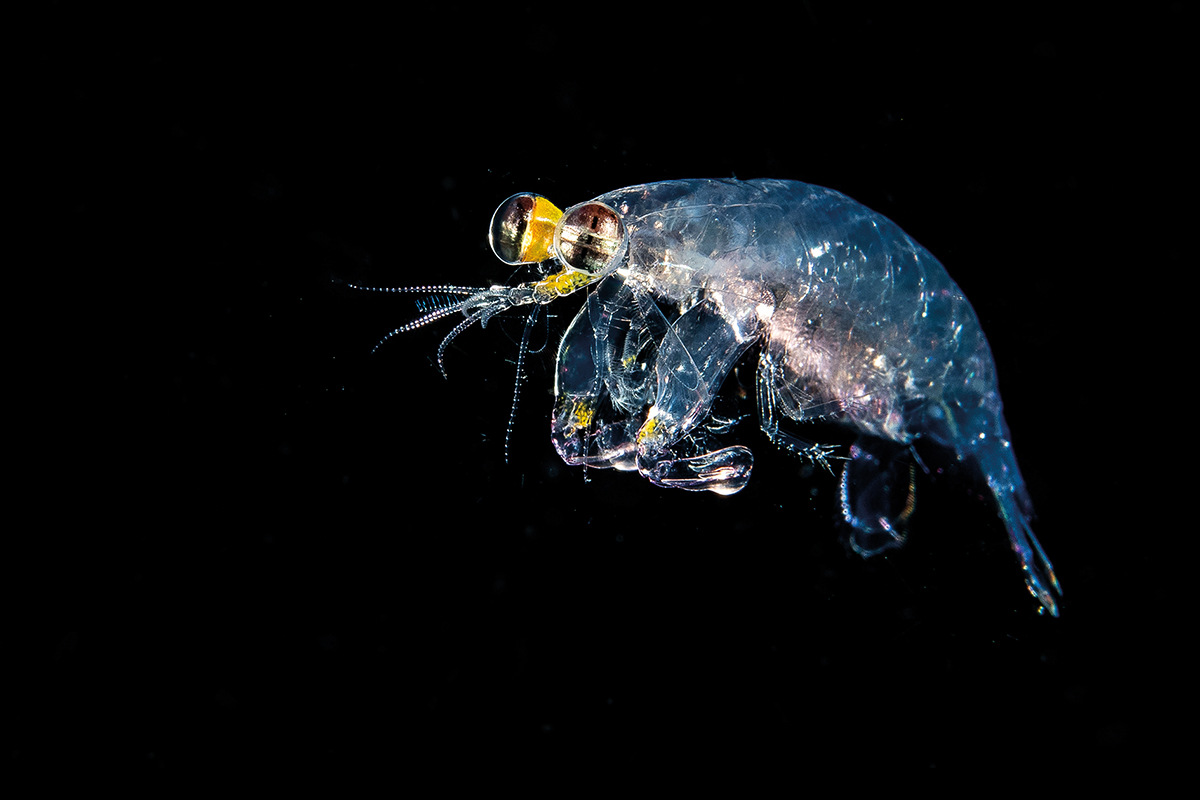
In this edited extract from Planktonia, The Nightly Migration of the Ocean’s Smallest Creatures, Erich Hoyt introduces us to some of the ocean’s most extraordinary and vital life-forms
When people hear the word ‘migration’, they often think of humpback whales, Arctic caribou, albatrosses, leatherback sea turtles – animals that move from a feeding area to a breeding area and back each year. But the greatest migration on Earth happens twice every night. The movement is largely vertical and largely performed by plankton, organisms that drift in the ocean’s currents, and micronekton, the small animals that can actively swim against those currents, accompanied by followers and hangers-on, including predatory fishes, squid, octopus and other species that have acquired a taste for plankton.
The migration starts deep in the waters of the ocean every evening at sunset. The night-time migration is composed of miniature creatures of intricate design, a riot of colour, near-transparency or iridescence and flashing lights. As they move, the zooplankton, the animals, nibble on phytoplankton — the tiny plants of the plankton — and other tasty morsels in the water and, eventually, some of the zooplankton nibble on each other. The feeding ends just before dawn, when the plankton retreat to the ocean depths to hide during the day until, once again, the next evening, they migrate back up the water column.
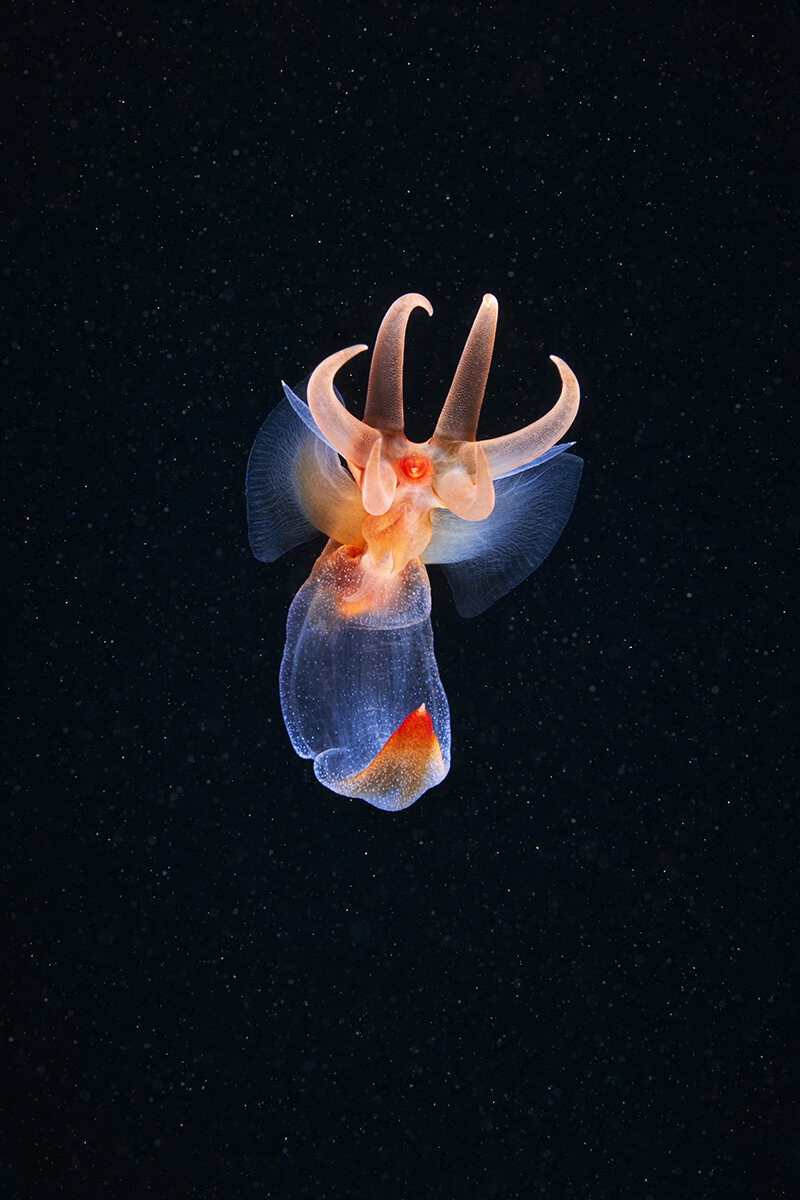
Measuring between three and five centimetres, a voracious sea angel adopts its hunting pose, ready to capture its near relative, the sea butterfly. This planktonic pteropod mollusc arrives in the White Sea in March or April, but by June it’s gone. Photo: Alexander Semenov
Swimming up and down the water column must be a heroic feat. To move upward, some plankton wave their arms like dancers or flap their tails; some use a kind of breaststroke with both limbs; others lurch ahead, often with one limb providing the thrust. It’s amazing how quickly you can move if you’re hungry or trying to avoid being someone else’s midnight feast.
It was in 1817 that French zoologist Georges Cuvier became the first person to report this nightly vertical migration of plankton after witnessing it in a lake. During the late 1800s, Austrian geologist Theodor Fuchs took net samples at various depths of the open ocean to show that planktonic crustaceans were moving from deep to surface waters as night came on. But no one realised at the time how prevalent vertical oceanic migrations were.
During the Second World War, echo sounders on German U-boats in the North Atlantic seemingly showed the ocean floor moving up every night. After the war, scientists comparing the mass of plankton and micronekton, such as lanternfishes, that they collected at different depths at night and during the day realised that this was a biological phenomenon happening all over the ocean from polar to tropical waters. The global vertical migration of plankton and micronekton was so massive that it was read by the echo sounders at the bottom of the ocean.
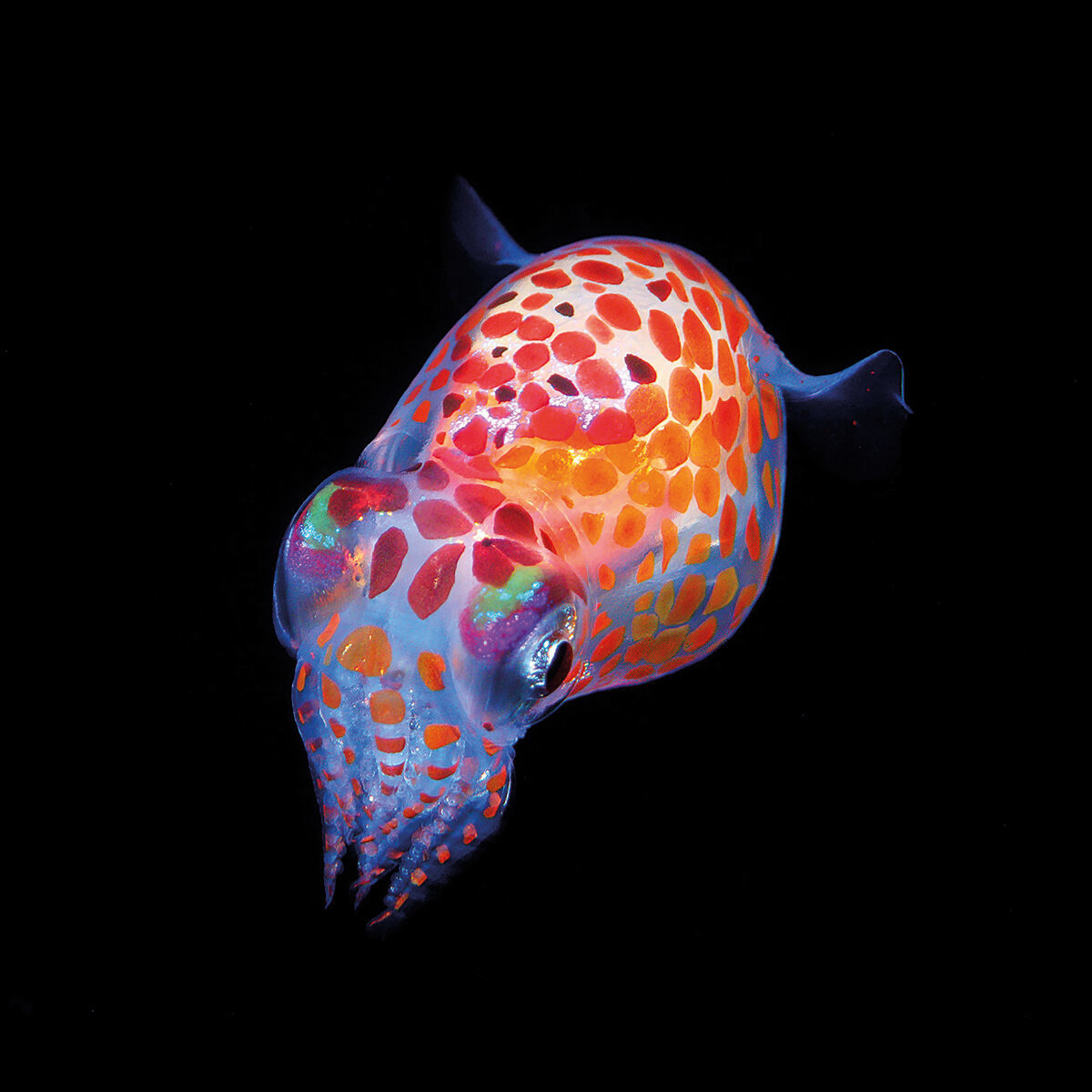
At night, bioluminescent bacteria that feed on amino acids and sugars in the squid’s body begin to glow. Photo: Ryo Minemzu
Over the past decade, as macro photography combined with diving in the open sea at night has grown in popularity, divers have begun sending their images to scientists and asking them to identify the species. In some cases, at first, the scientists had only general ideas of what they were looking at. For the fishes, drawing on years of plankton research from net samples, and studying the body shapes, fin placements, numbers of fin elements and muscle segments, the scientists could usually identify the family and often the genus, but sometimes not the species. The fin shapes and other fragile parts of the planktonic larvae looked very different from the eventual adult forms. In cases like those, identifications have depended on the ability of the diver to collect an individual so that scientists could match the DNA of the larval plankter to the adult.
With the collection of specimens for genetic analysis, a whole new field has started to open up. The photographers in this book — some of them part-time scientists, some working with scientists, some citizen scientists — aim to contribute to that literature, working to identify unknown species and capture their behaviour with a camera.
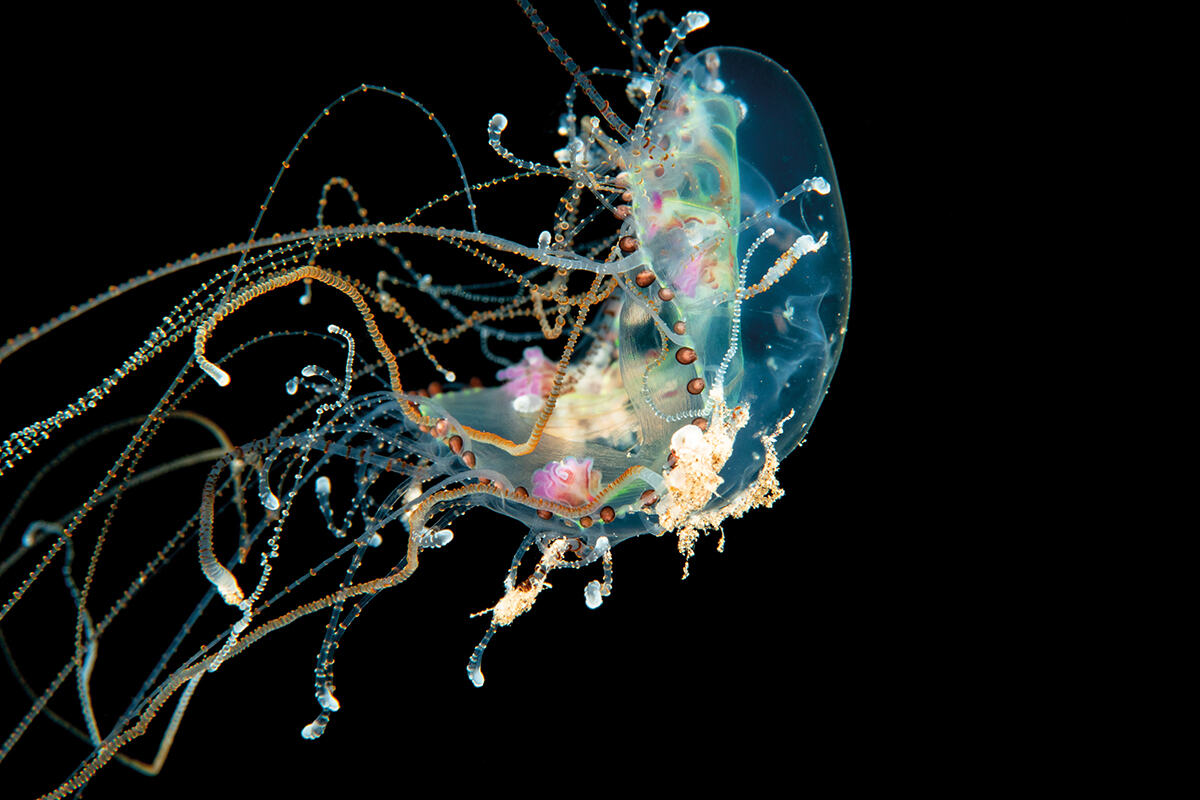
This tiny adult-stage medusa, with a bell only 1.3–2 centimetres across, drifts through the waters of Lembeh, Indonesia. Photo: Linda Lanniello

This 2.8-centimetre, nearly mature jellyfish is transparent, with its red gonad, or reproductive gland, clearly showing. Photo: Ryo Minemzu
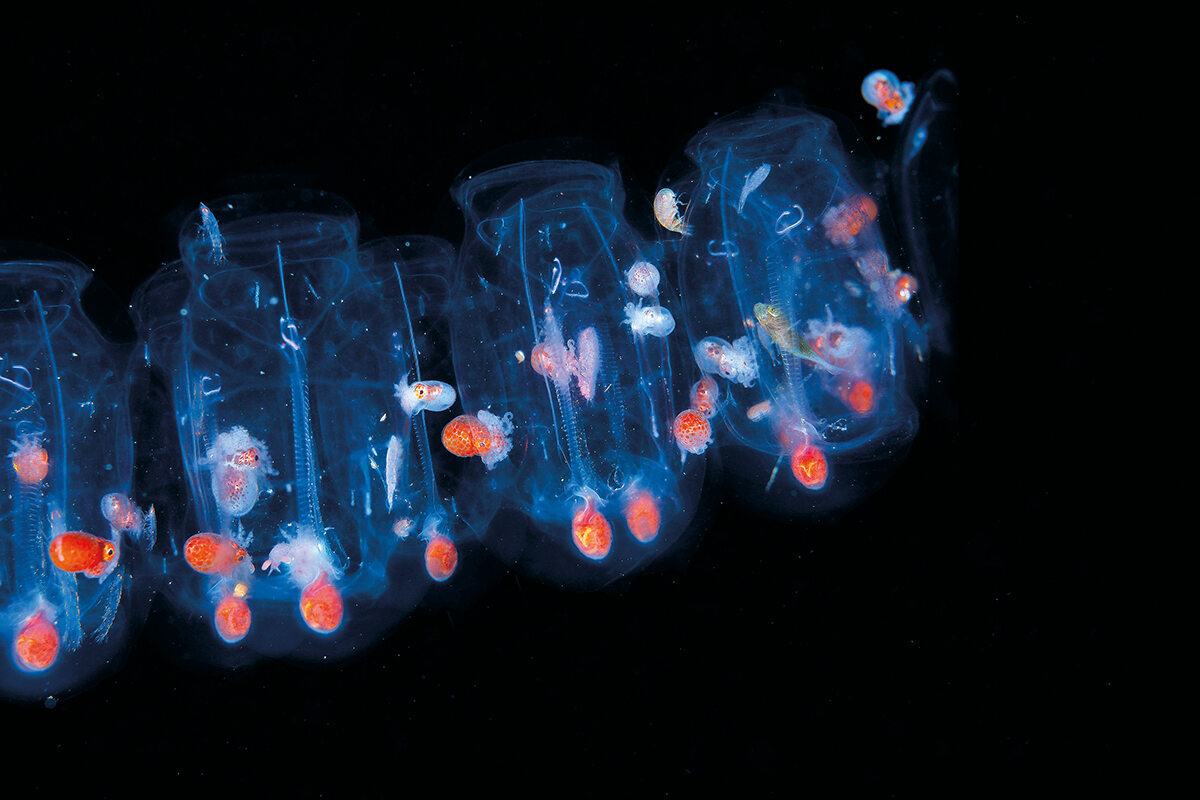
The spiral salp isn’t a vertical migrator, staying in the upper waters day and night. Looking into part of the salp we glimpse various residents. Inhabiting the bottom row are 20 juvenile paper nautiluses. They are joined by a few juvenile fish, several mature but tiny tified hyperiids, and both male and female sea sapphires. Photo: Ryo Minemzu



These larval sea anemones (Actinia sp.), from the Okhotsk Sea of Russia, range in size from 0.05 to 0.5 centimetres. When the larvae jump aboard Aequorea jellyfish, they have both a source of food and good protection wherever the jellyfish goes. Photo: Alexander Semenov



